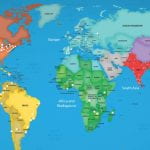We are about to reach a year since the first shelter in place was ordered in San Francisco, a year since the hilltop campus closed its classrooms, and since we met in person with our peers at USF.
Many of us are disconnected from our communities and dealing with COVID-19 restrictions and physical distancing rules, we have turned to social media and become even more reliant on digital tools for connection and communication.
Social Media has been used as a tool for community organizing and advocacy. Activists create content and educate all who want to learn and engage with social justice issues. We’re seeing how, across multiple issues, young people are becoming active participants in driving dialogues with policy-makers, on a state and federal level. In addition, they are empowering the citizens of the communities in which they reside, taking an active role in shaping the future we hold.
Priyanka Jaisinghani, World Economic Forum
In our last meeting, the I-LEADers reflected on the ways that they read their reality and how they engage in activism and social justice through social media while sheltering in place.
Here is a list of resources I-LEADers curated by topic:
Education disparities and justice:
- A Hope in the Unseen by Ron Suskind (book)
- The 74: non-profit, non-partisan news site covering education in America (website)
- Why is Congress redlining our schools? (article)
- John Hunter: Teaching with the World Peace Game (TedTalk)
Internal Armed Conflict in Colombia:
- Detras de la Guerra de Colombia (book)
- Liga No Silencio (Instagram)
- El olvido que seremos- Memories of My Father (movie)
- Rutas del conflicto (website)
Environmental Justice in LatAm:
- Contaminación ambiental, Caritas Ecuador (website)
- REPAM- Red Eclesiastica Pan Amazónica (website)
- Gaia Amazonas (Instagram)
Black Liberation:
- Kendrick Sampson (Instagram)
- Lovecraft Country (TV Show)
- Janaya Future Khan (Instagram)
- Hood Feminism by Mikki Kendall (Book)




